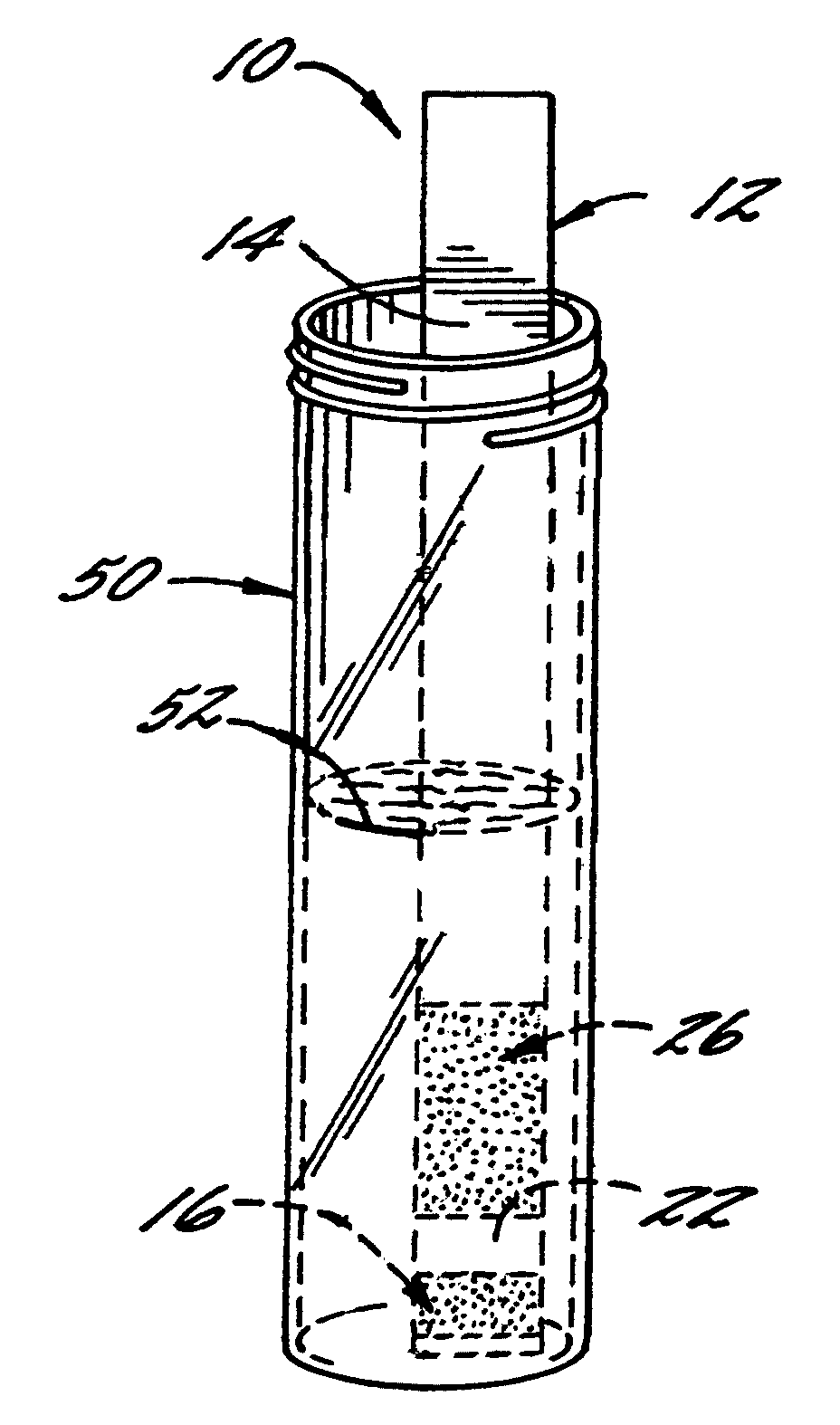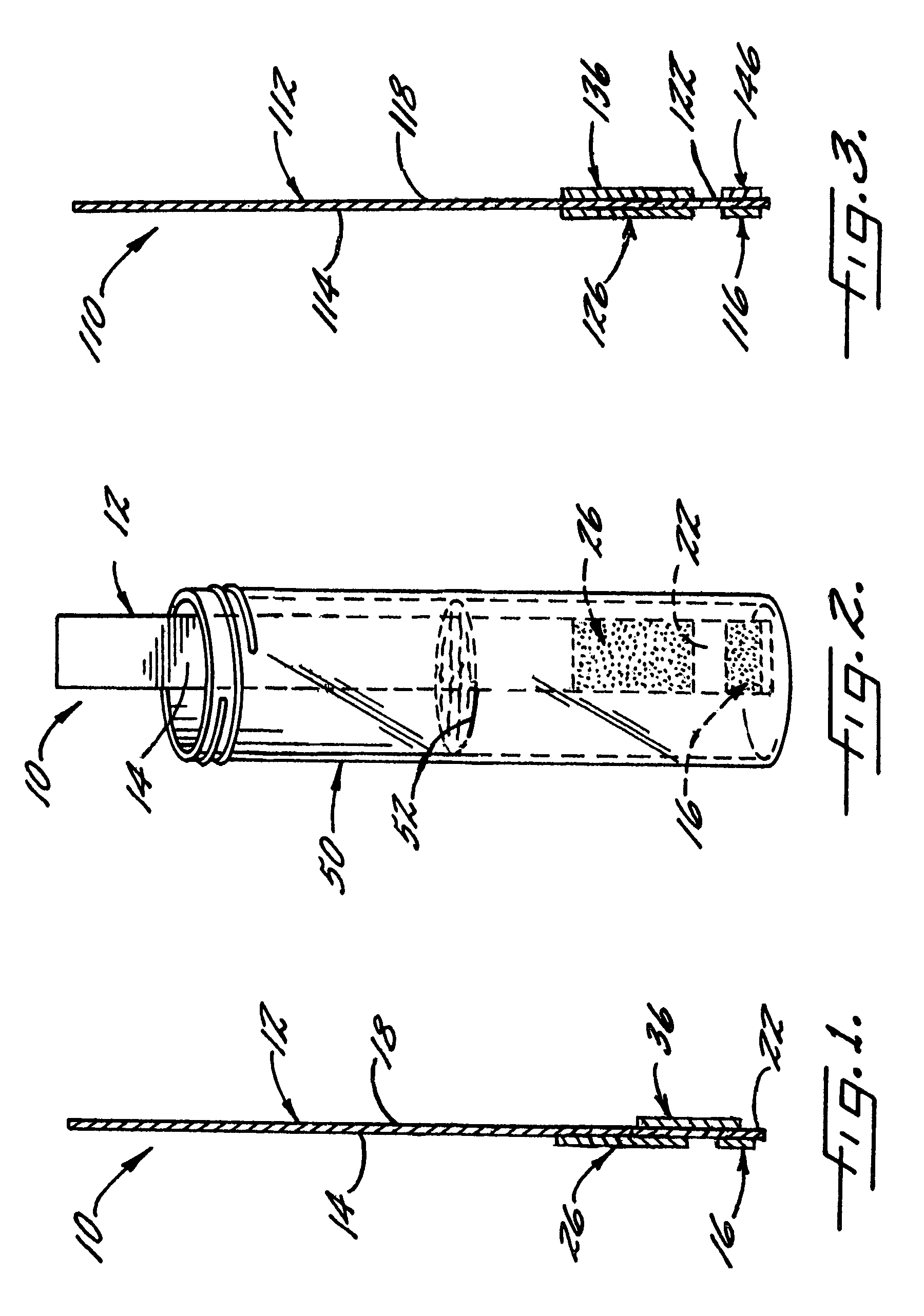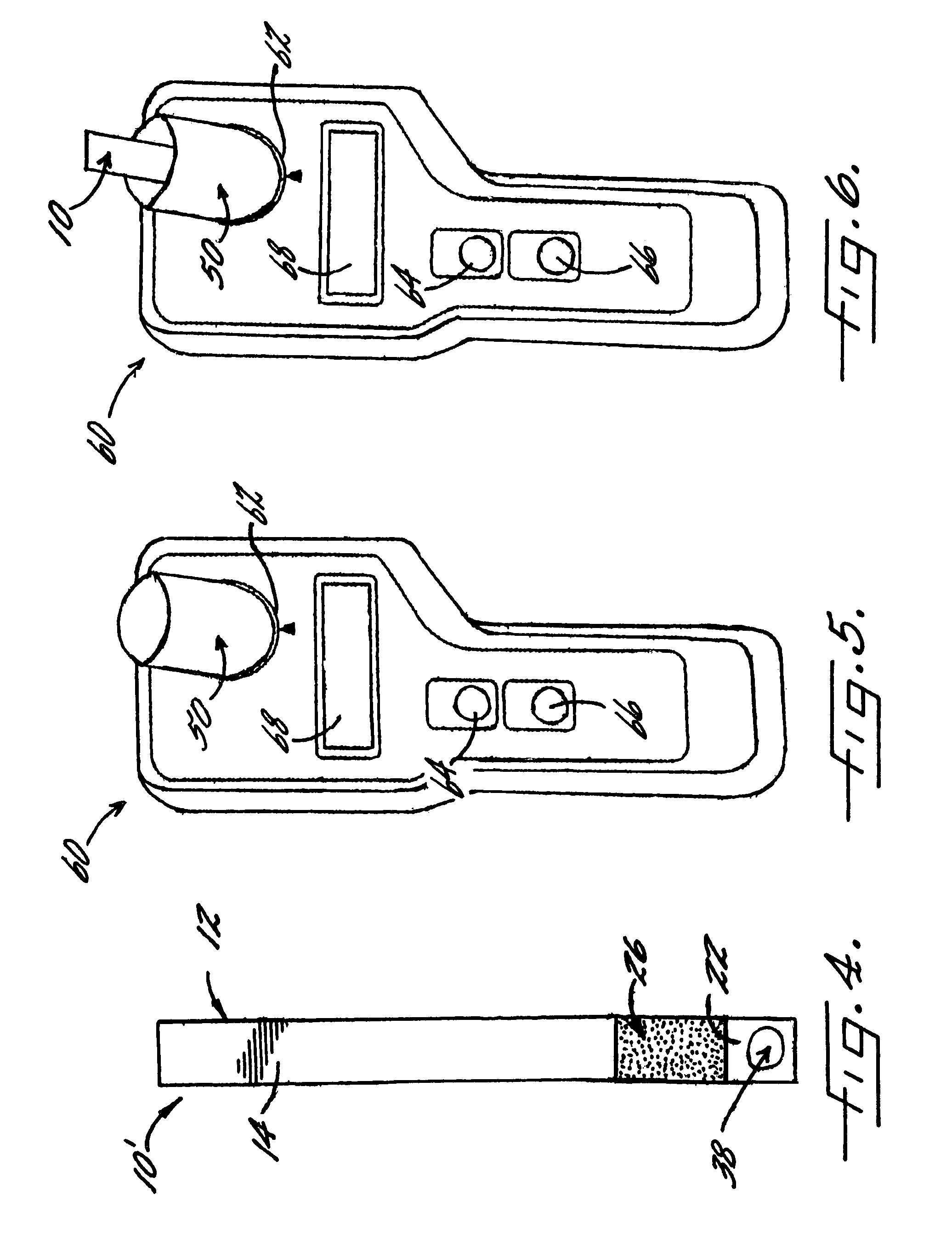Reagent delivery and photometric chlorine analysis
a technology of photometric chlorine and reagent delivery, applied in the field of photometric chlorine analysis, can solve the problems of safety hazards, variability of measurements, and not all solids may dissolve within the specified allowed time, and achieve the effect of reducing variability and minimizing manipulation
- Summary
- Abstract
- Description
- Claims
- Application Information
AI Technical Summary
Benefits of technology
Problems solved by technology
Method used
Image
Examples
example 1
Free Chlorine
[0066]With reference again to reagent delivery device 10 of FIGS. 1 and 2, in a convenient embodiment, support 12 is made of PVC, is 8 mm wide and has a thickness of 0.009 inches, carrier 16 is ¼″ long and 8 mm wide, and carriers 26,36 are each ½″ long and 8 mm wide. The carriers are fibrous pads made of Schleicher and Schuell 497 paper, which has a thickness of about 0.2 mm. ¼″ long carrier 16 is loaded with approximately ten times the DPD sulfate used in the 4500-Cl G methodology, and carriers 26,36 are loaded with potassium phosphate monobasic anhydrous to sodium phosphate dibasic anhydrous in a weight ratio of 23:12. The DPD salt impregnation solution includes 3.4 wt. % of 2,2-bis(hydroxymethyl)propionic acid. The barrier benefit increases when the DPD salt is used in a high loading. The impregnation solution for buffer system carriers 26,36 includes 0.8 wt. % of EDTA disodium dihydrate.
[0067]In a preferred method of use and referring in particular to FIG. 2, 10 ml ...
example 2
Free Chlorine
[0069]In this Example, reagent delivery device 10 corresponds to that used in Example 1 except that the DPD pad impregnation solution includes 9.8 wt. % of 2,2-bis(hydroxymethyl)propionic acid. Following the method of Example 1, a free chlorine value of 1.69 mg / L is determined for the water sample.
example 3
Free Chlorine
[0070]In this Example, reagent delivery device 10 corresponds to that used in Example 2 except as now explained. The DPD sulfate fibrous pad is omitted, and instead, the support carries a mass 16 that is a mixture of DPD sulfate and 2,2-bis(hydroxymethyl)propionic acid. Mass 16 is prepared by depositing a small quantity of the DPD impregnation solution of Example 2 on support 12, and then drying. The loading of DPD sulfate is 0.0164 g, and the ratio of the DPD sulfate to the propionic acid is about 5:1. Following the method of Example 1, a free chlorine value of 1.82 mg / L is determined for the water sample.
PUM
| Property | Measurement | Unit |
|---|---|---|
| wavelength | aaaaa | aaaaa |
| wavelength | aaaaa | aaaaa |
| wavelength | aaaaa | aaaaa |
Abstract
Description
Claims
Application Information
 Login to View More
Login to View More - R&D
- Intellectual Property
- Life Sciences
- Materials
- Tech Scout
- Unparalleled Data Quality
- Higher Quality Content
- 60% Fewer Hallucinations
Browse by: Latest US Patents, China's latest patents, Technical Efficacy Thesaurus, Application Domain, Technology Topic, Popular Technical Reports.
© 2025 PatSnap. All rights reserved.Legal|Privacy policy|Modern Slavery Act Transparency Statement|Sitemap|About US| Contact US: help@patsnap.com



